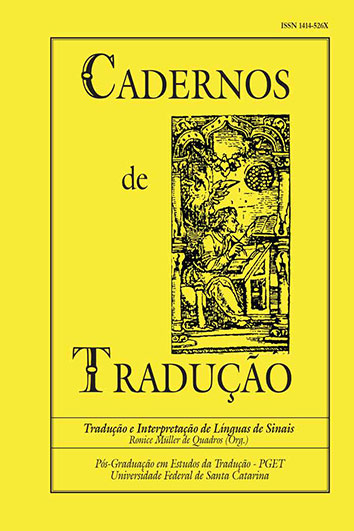An historical overview of signed language interpreting research: Featuring highlights of personal research
DOI:
https://doi.org/10.5007/2175-7968.2010v2n26p63Abstract
In the last twenty-five years research into signed language interpreting has burgeoned as a sub-discipline of translation and interpreting studies. Grbic’s (2007) bibliometric analysis of signed language interpreting (SLI) research provides an interesting picture of the research that has been conducted over the years. In developing a database of SLI literature, Grbic analysed 908 research texts produced from 1970 to 2005. She found that that there was a significant increase in production over that time, which accelerated in the mid to late 1990s. The majority of texts were published as journal articles or in collections, and covered several key themes including discussions of settings and modes, professional issues, quality issues, ethics, role and socio-cultural issues, linguistic issues, cognitive issues and research issues. In her conclusion Grbic states "The data revealed that research into SL interpreting can contribute to the enhancement of knowledge and to the general understanding of interpreting as a topic of scientific research" (p.45) Thus in order to inform interpreting studies more generally, it is worth canvassing some of the key areas of SLI research. Drawing on two other articles (J. Napier, 2005, forthcoming), this article provides a selective overview of SLI research, then focuses on a key area of SLI research: educational interpreting, with some highlights from personal research studies on SLI in university lectures.
Downloads
Veröffentlicht
Zitationsvorschlag
Ausgabe
Rubrik
Lizenz
Autores têm autorização para assumir contratos adicionais separadamente, para distribuição não exclusiva da versão do trabalho publicada nesta revista (ex.: publicar em repositório institucional ou como capítulo de livro, com reconhecimento de autoria e publicação inicial nesta revista).





















































